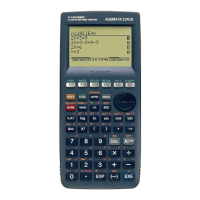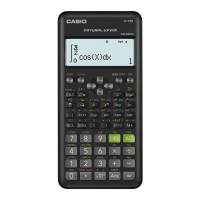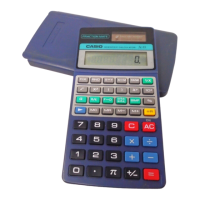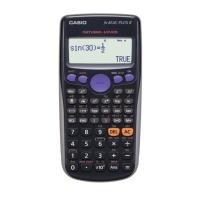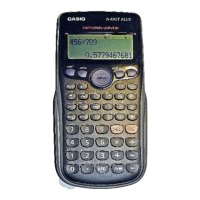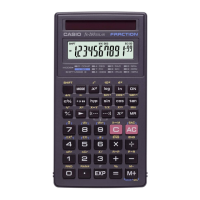19990401
3-2-3
Manipulating List Data
u To generate a sequence of numbers [OPTN]-[LIST]-[Seq]
K1(LIST)d(Seq) <expression> , <variable name> , <start value>
, <end value> , <increment> ) w
• The result of this operation is stored in ListAns Memory.
Example To input the number sequence 1
2
, 6
2
, 11
2
, into a list, using the function
f(x) = X
2
. Use a starting value of 1, an ending value of 11, and an
increment of 5
AK1 (LIST)d(Seq)vx,
v,b,bb,f)w
Specifying an ending value of 12, 13, 14, or 15 produces the same result as shown above,
because all of them are less than the value produced by the next increment (16).
u To find the minimum value in a list [OPTN]-[LIST]-[Min]
K1(LIST)e(Min)1(LIST)b(List) <list number 1-20> )w
Example To find the minimum value in List 1 (36, 16, 58, 46, 56)
AK1 (LIST)e(Min)
1(LIST)b(List)b)w
u To find the maximum value in a list [OPTN]-[LIST]-[Max]
Use the same procedure as when finding the minimum value (Min), except press f(Max) in
place of e(Min).
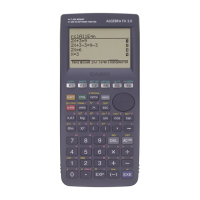
